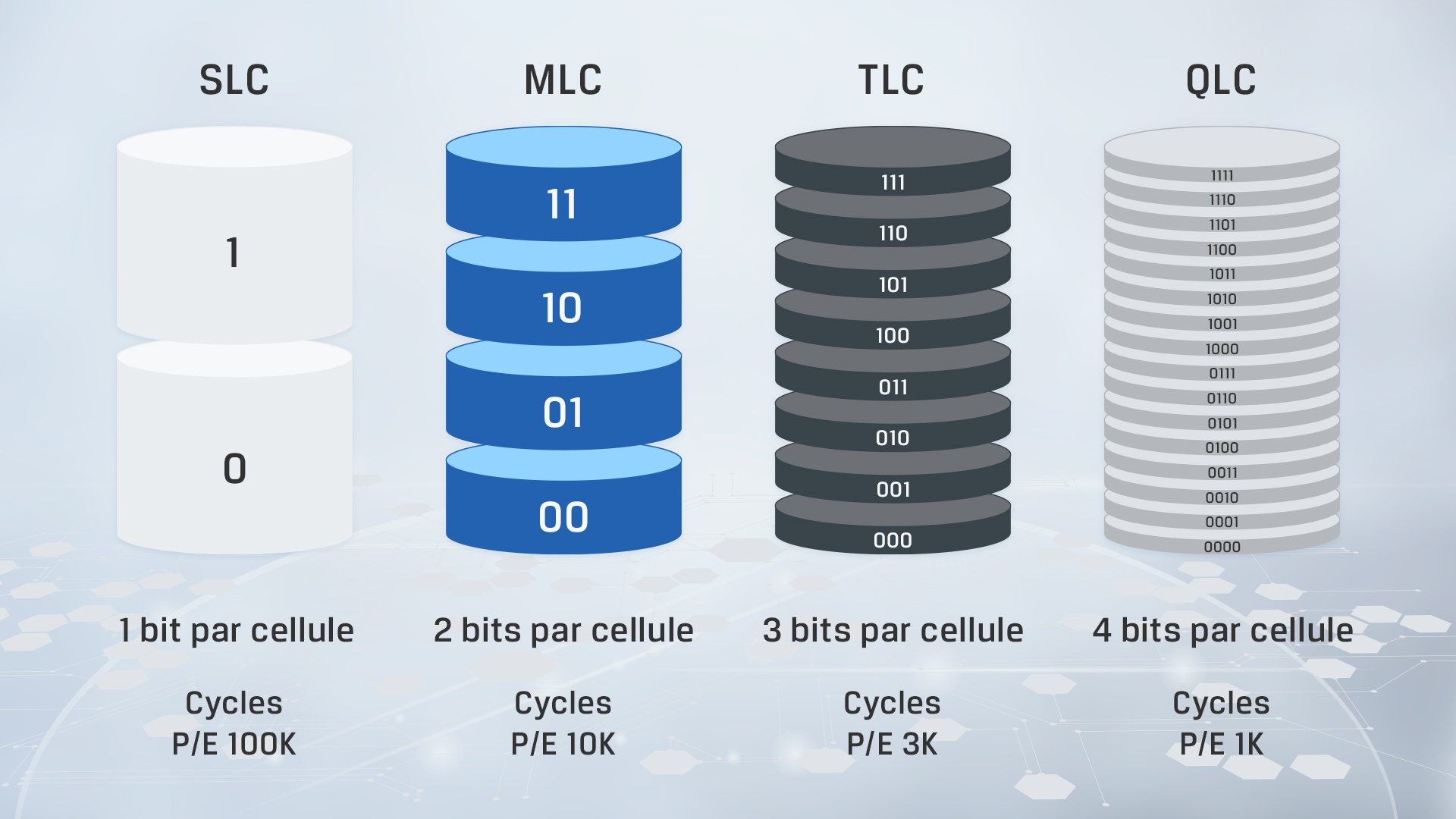What is NAND memory?
NAND is a non-volatile flash memory that can retain data even when not connected to a power source. The power-free data storage capacity makes NAND technology a great option for internal, external, and portable devices. USB drives, SSDs and SD cards all use flash technology, bringing memories to different devices, such as your cell phone or digital camera.
Several types of NAND are available on the market. Simply put, each type is differentiated by the number of bits stored per cell. Each bit represents an electrical charge which can only take one of the following two values: 0 or 1, on/off.
Cost, capacity, and endurance are the main differences between NAND types. Endurance is determined by the number of program and erase (P/E) cycles a flash cell can undergo before it begins to wear out. A P/E cycle is the process of erasing and writing a cell. The more P/E cycles NAND can withstand, the better the endurance of the device.
Common types of NAND storage are SLC, MLC, TLC, and 3D. This article presents the different characteristics of each type of NAND.

NAND SLC
Advantage: Maximum endurance – Disadvantage: High costs and low capacities
Single-level cell (SLC) NAND technology stores only one bit of information per cell. The cell stores either the value 0 or the value 1. Therefore, data can be written and retrieved faster. SLC technology offers the best performance and highest endurance with 100,000 P/E cycles, so it will last longer than other types of NAND. However, with its low data density, SLC is the most expensive type of NAND. Therefore, it is not commonly used in consumer products. SLC is typically favored for servers and other industrial applications that require speed and endurance.
NAND MLC
Advantage: More economical than SLC – Disadvantage: Slower and less durable than SLC
Multi-level cell (MLC) NAND technology stores multiple bits per cell, although the term MLC generally equates to 2 bits per cell. MLC has a higher data density than SLC and can therefore be produced in larger capacities. MLC offers a good combination of price, performance and endurance. However, MLC is more sensitive to data errors with 10,000 P/E cycles and therefore its endurance is lower than that of SLC. MLC is typically used in consumer products where endurance plays a less important role.
NAND TLC
Advantage: The most economical with the highest capacities – Disadvantage: Low endurance
Triple-level cell (TLC) NAND technology stores 3 bits per cell. As the number of bits per cell increases, the cost falls and the capacity increases. However, it has negative effects on performance and endurance, with only 3,000 P/E cycles . Many consumer products use TLC because it is more economical.
NAND 3D
Over the past decade, 3D NAND technology has been one of the biggest innovations in the flash memory market. Manufacturers developed 3D NAND technology to address problems encountered when they reduced the size of 2D NAND to achieve higher densities at lower cost. With 2D NAND, the cells that store data are placed horizontally, side by side. This means that the space on which cells can be placed is limited and reducing their size also reduces their reliability.
So NAND manufacturers decided to stack cells in another dimension, which gave rise to 3D NAND, where cells are stacked vertically. The higher density allows for greater storage capacities without hugely inflating prices. 3D NAND technology also offers better endurance and lower power consumption.
Overall, NAND is an extremely important memory technology because it offers fast write and erase times at a lower cost per bit. With the growth of the video game industry, NAND technology is expected to continue its development to meet the ever-increasing storage needs of consumers.



